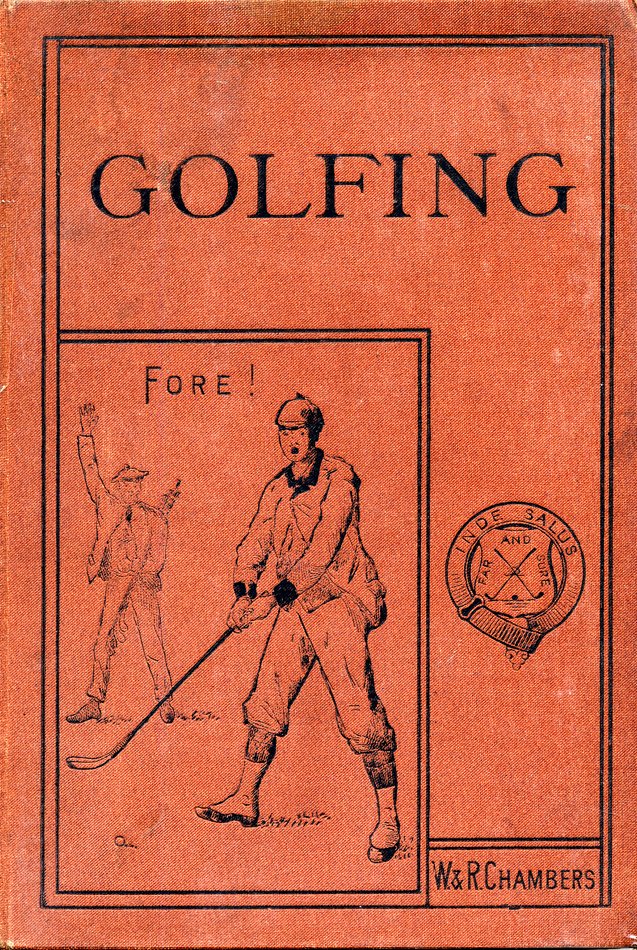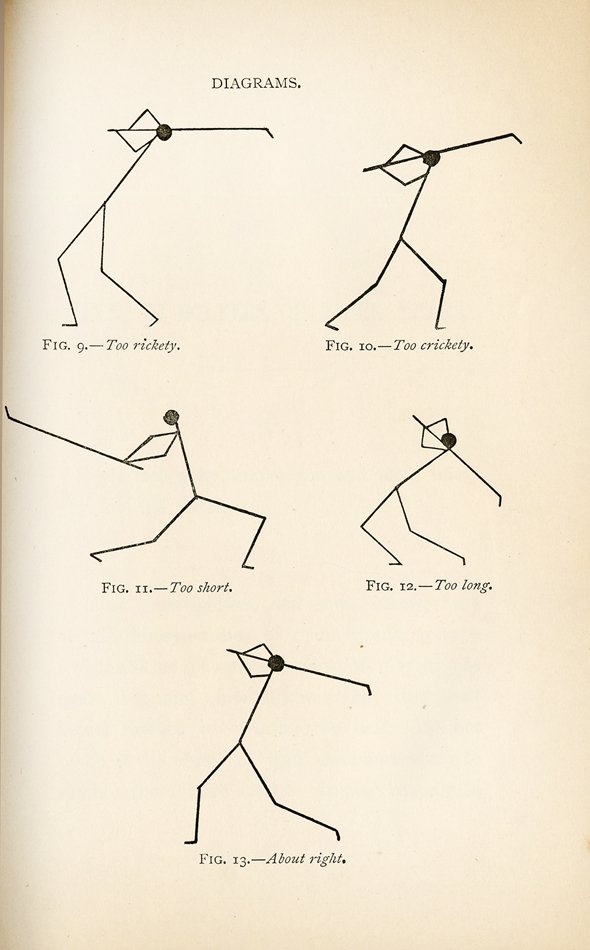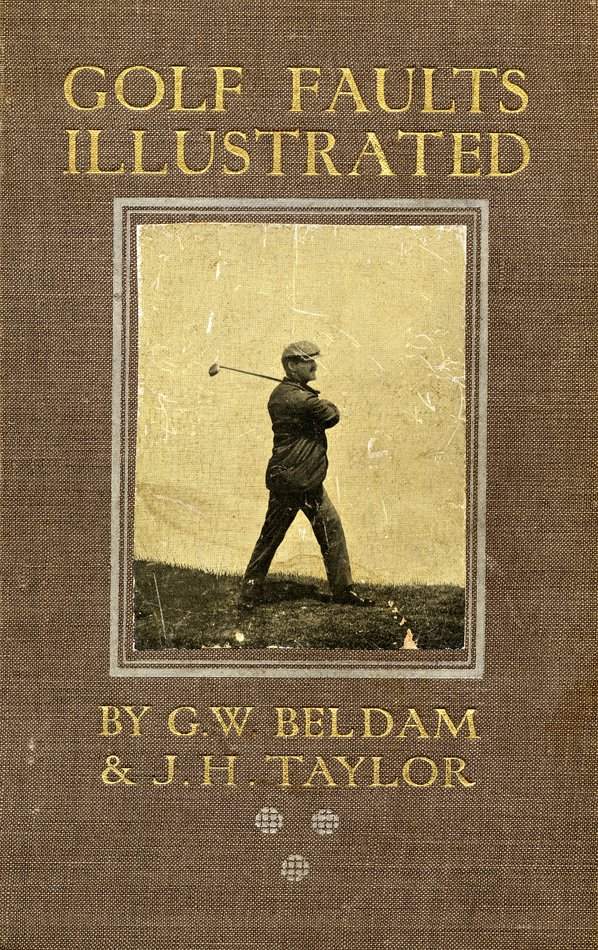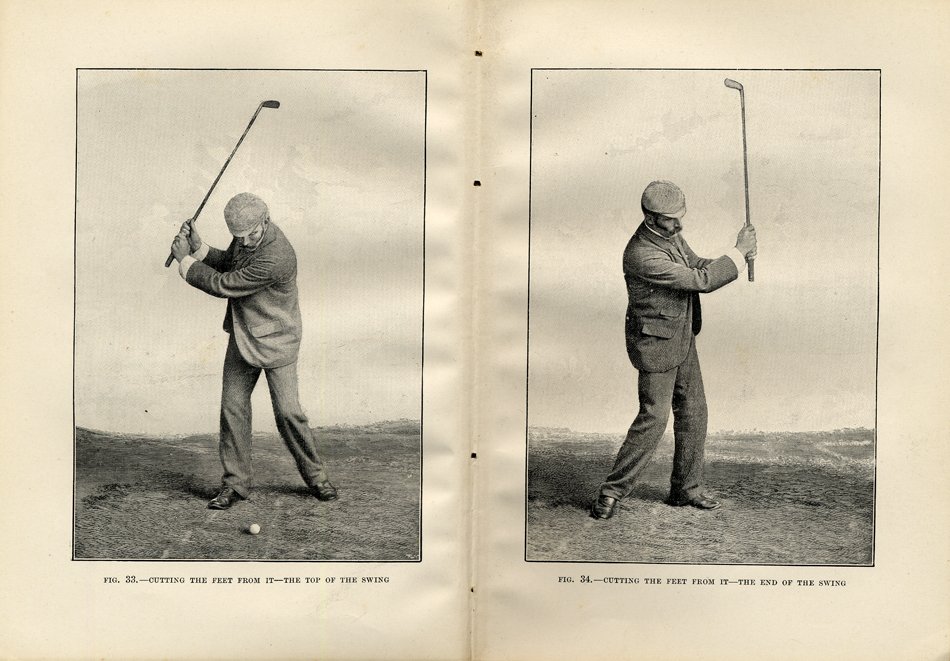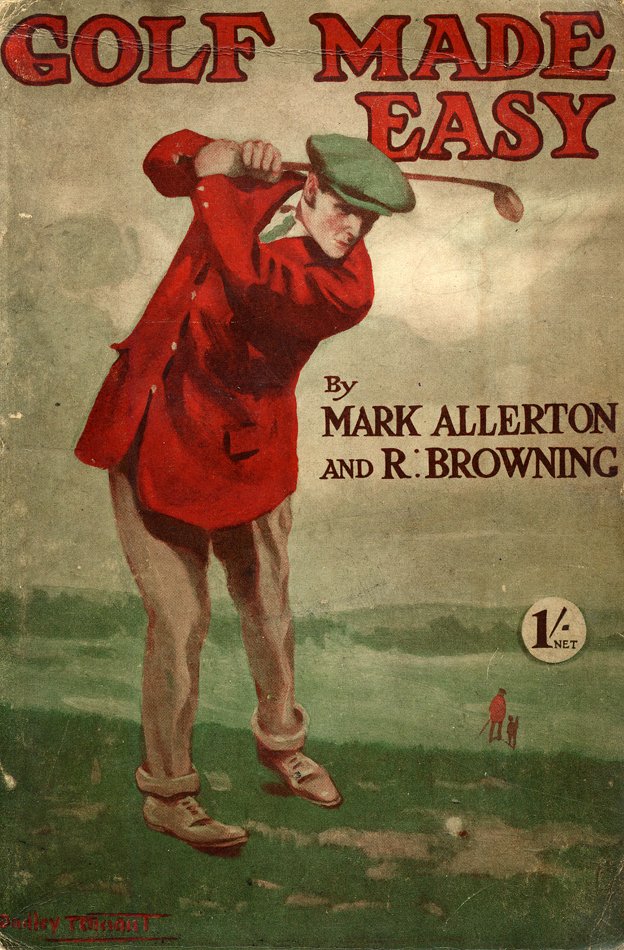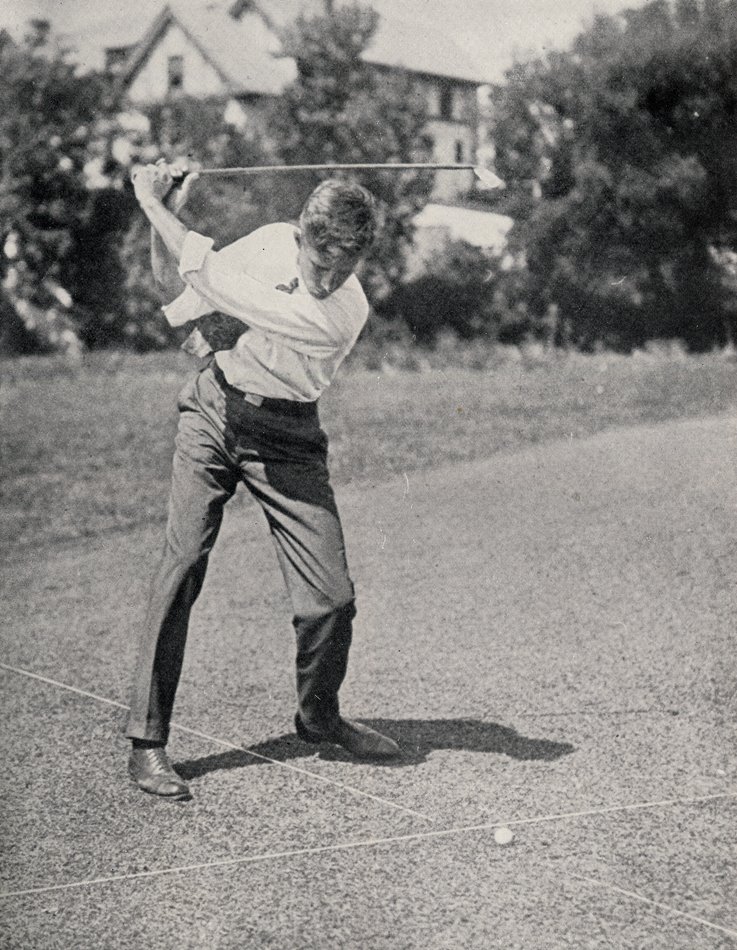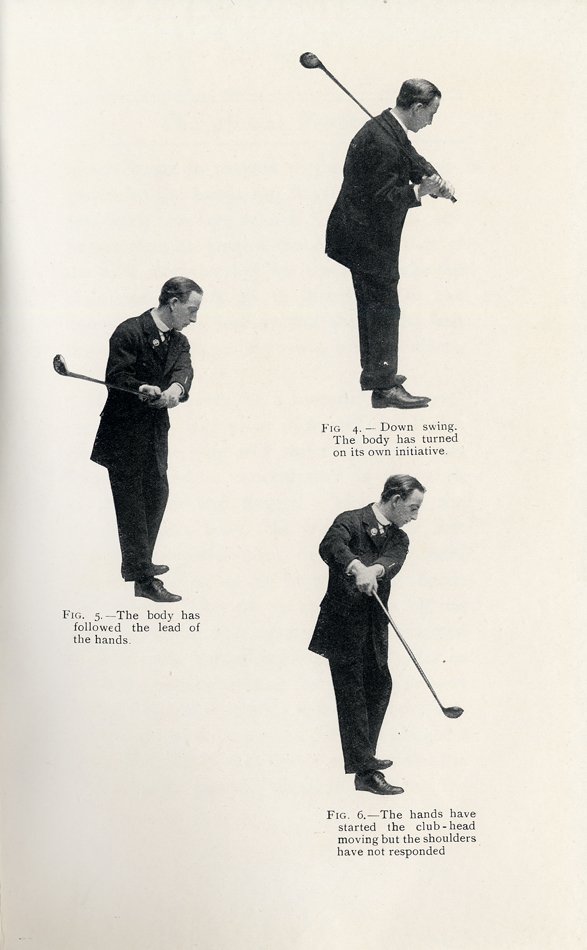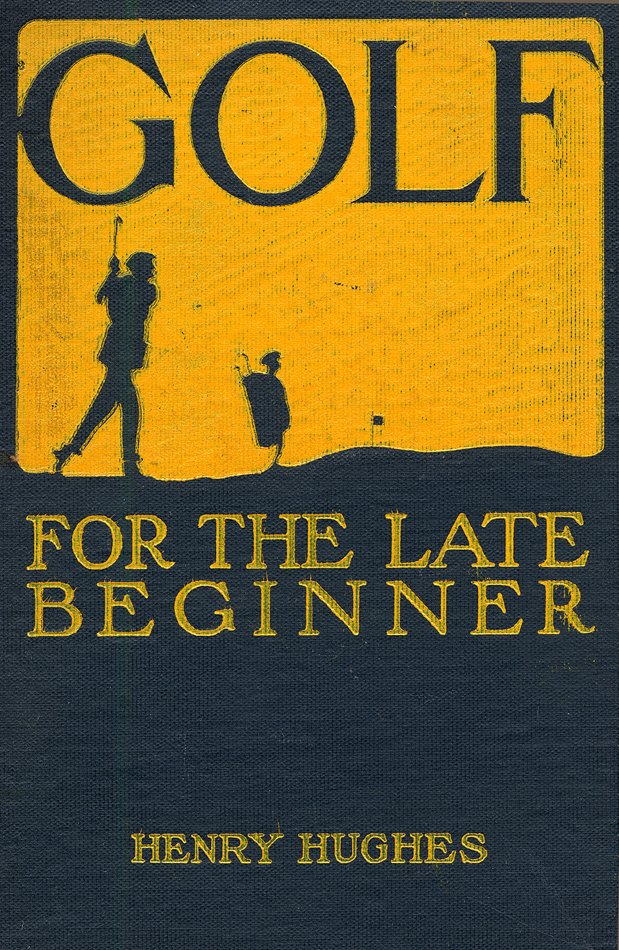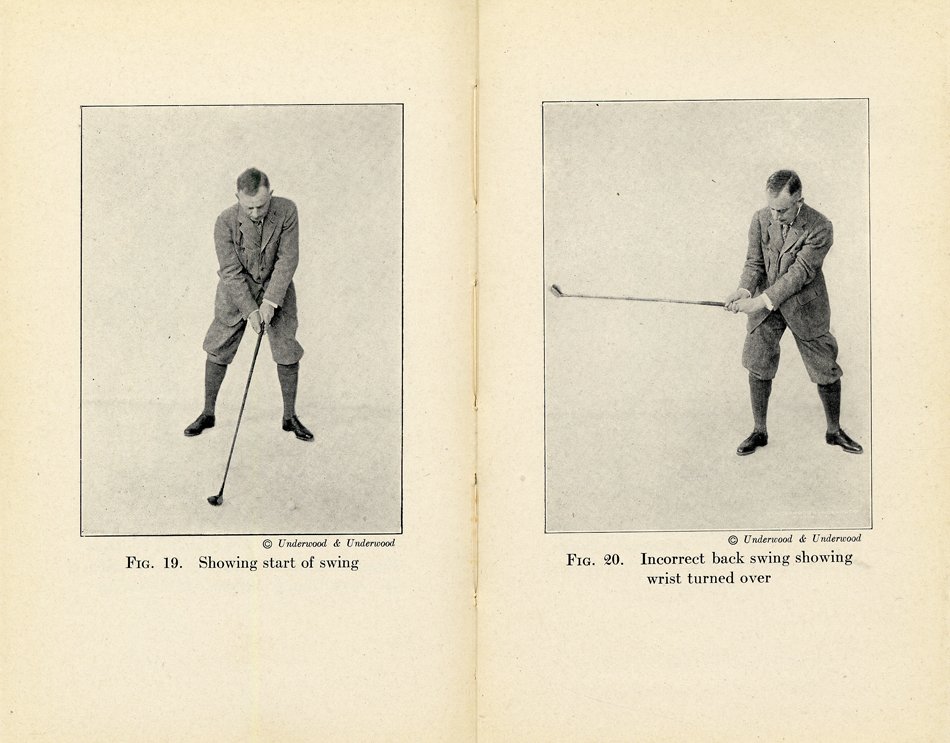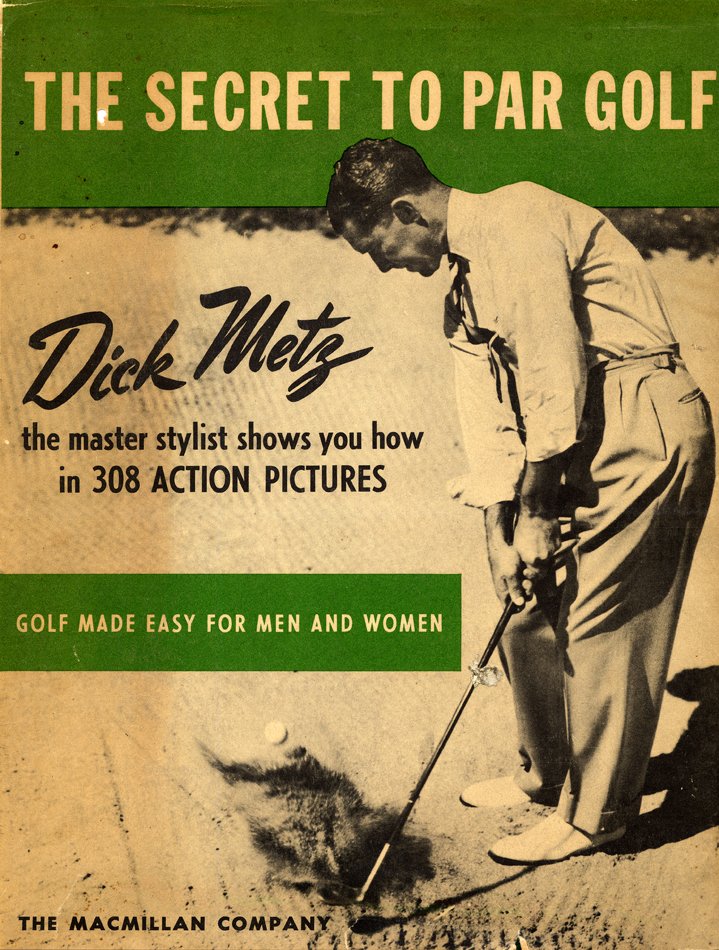GRIP AND SWING
One of the earliest and most continuously popular types of golf publication is the instructional book or manual. Golf places such great pressures on individual performance and expertise that golfers have a nearly insatiable need for advice and counsel on the basic mechanics of grip, stance, address, swing, and follow-through.
William Park, Jr., son of the first British Open champion and himself twice the winner of the Open, published the first instructional book. to be written by a golf professional, The Game of Golf (1896). Park's book utilized beautifully detailed illustrations of a golfer in the act of swinging to demonstrate the ideal arc-shaped path of the club. By the 1920s golf instruction books were using stick figures, diagrams and charts, background and foreground grids, half-tone photographs of swings or body details, posed shots of proper or improper positions, and cartoon drawings to make their points. These books appeared as the leading golfers of the day such as Johnny Laidlay, Henry Vardon, and Bobby Jones were rethinking the ideal grip and swing. Some golf authorities, following Vardon's lead, also felt that wearing a jacket or other moderately restrictive clothing helped maintain a good, repetitive pattern while swinging.
Just as there have been many varied approaches to grip and swing, publishers of golf books have continued to experiment with new ways of presenting information to their readers. Gene Sarazen's From Tee to Cup by the Four Masters (1937) included pages edged by reproductions of movie film showing swings with different clubs. Robert H. K. Browning in Golf with Seven Clubs (1956) used time-lapse photography to demonstrate the perfect arc swing. Edward Acree, Charles Bassler, and Nevin H. Gibson, among other writers, relied on shoe outlines to indicate the proper placement of feet.
More recently, golf instruction has moved away from a reliance on books alone and found ways to integrate printed text with newer technologies. Instruction books like Robert Winthrop Adams' Timing Your Golf Swing (1957) came with a 45-rpm record to accompany home practice sessions. Jack Nicklaus, among other leading names in golf, entered the lucrative market for instructional videotapes with ventures such as his introduction to Volume One of the Bobby Jones Instructional Series, "The Full Swing." And today, golfers are increasingly turning to electronic sources on golf as current news and information about the game are disseminated on the World Wide Web.
